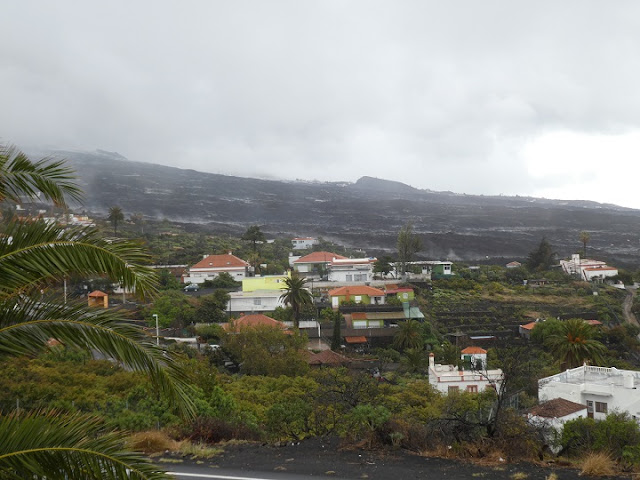The Canary Islands are part of Spain and lie off the coast of northwestern Africa. They are volcanic in origin. There are 8 main islands. La Palma is one of the smallest of the Canary islands and is very mountainous. It is the most north-westerly island of the Canaries and is heart shaped.
The capital Santa Cruz de La Palma is nestled at the foot of steep hills, has cobbles and is famous for the houses in Portuguese style with wooden balconies.
The island was in the news often from September to December 2021 due to the volcanic eruption. The eruption wasn't actually from a volcano, but from the Cumbre Vieja volcanic ridge, in the southern half of the island. It lasted from 19 September to 13 December 2021 and was the first volcanic eruption on the island since the eruption of Teneguía in 1971. At 85 days, it is the longest known eruption of a volcano on La Palma.
As already mentioned, La Palma is shaped like a heart. And within this is another heart shape, the spectacular volcanic crater, Caldera de Taburiente in the north of the island. The caldera area is within a national park. I went on a tour to the park. Firstly we stopped at the Caldera de Taburiente visitor centre, mainly to see the model of the island which clearly shows the heart shapes.
The weather was really awful, with rain and low cloud. We didn't expect to have any view from the top, but went up anyway, along very narrow and steep roads. The national park is full of Canary Island pine trees. These have been found to be fire resistant and can survive forest fires as the bark protects the inner tree.
We reached the top of the road where there should be great views of the Caldera de Taburiente, but we were right up in the clouds and it was raining so we could see nothing. There was no point in getting out of the coach to walk to the viewpoint.
So although we missed the main attraction of the tour, to fill time, our guide arranged for us to see last year's volcano. We headed for the town of Tajuya and stopped at a viewpoint outside the church.
In front of us we could see the lava that covered houses and an industrial site. The eruption came out of the ground higher up. We couldn’t see it, but we could see the steam issuing from the lava field. The road to other villages has been buried and won’t be reopened as the lava is too deep.
The eruption started further to the left of the photo and the lava flowed down to the sea, enlarging the island -
Steam rising from the still hot lava -
The remains of an industrial estate
On this map you can see the roads that have disappeared and when clicking on the no entry symbol on the original map, it says road closed until 2031.
Amazingly only one person died by an indirect cause of the volcano, but 3000 buildings were destroyed and the roads to the peninsula cut off. The lava flow was up to 3.5 km wide and 6.2 km long. It is the island's most damaging volcano.
See more on Wikipedia and one of many youtube videos.
The Guardian article on what to do with all the ash and lava.
--
The old hydro volcano at Santa Cruz de La Palma, from the port and from the top -
--
In 2011 I saw the lahar from the 2010 Gunung Merapi volcano on Java, Indonesia.
















No comments:
Post a Comment